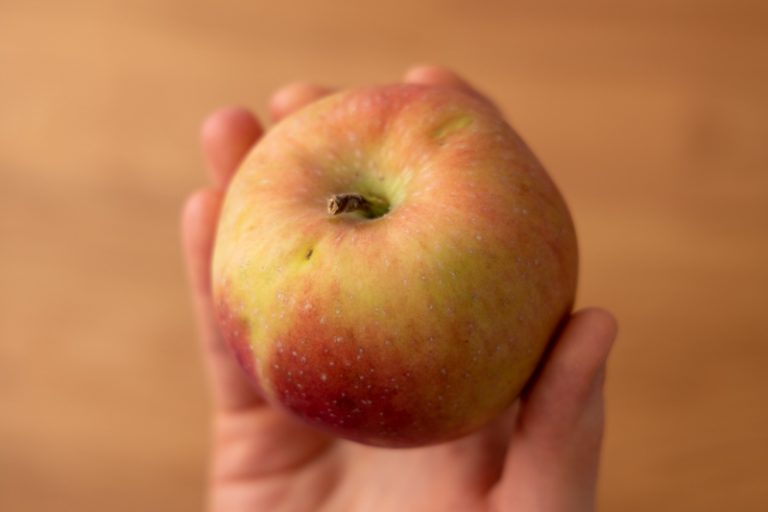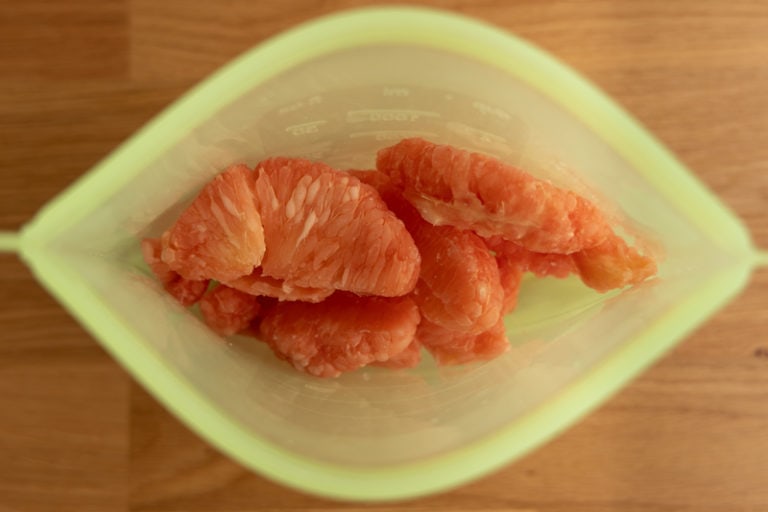How Long Do Tangerines Last and How To Store Them?
Here’s all about storage and shelf life of tangerines. Learn how long they last, how to tell if one is bad, and how you should store them.
Bought a big bag of tangerines and afraid that some of them will spoil before you get to them? How long do tangerines last?
Or maybe you’re not sure if you should refrigerate them or not.
Either way, this article has got you covered. In it, we’re going to discuss:
- how long tangerines are good for, depending on how you store them
- when it makes sense to refrigerate this citrus fruit
- telling if yours are still okay to eat or not
Interested? Read on.
Tangerines are sometimes called mandarin oranges. That’s a bit of a misnomer. Tangerine is one of a few types of mandarins. Another one you’re probably familiar with is clementine. All tangerines are mandarins, but not all mandarins are tangerines.

How Long Do Tangerines Last?
| Counter | Fridge | |
|---|---|---|
| Tangerine (whole) | 5 – 7 days | 1 – 2 weeks |
| Tangerine (peeled) | 4 days |
Tangerines last for 5 to 7 days at room temperature or up to 2 weeks in the fridge. The better the quality of the fruit and the fresher it is, the longer it’ll stay good for. Peeled tangerines should keep in the fridge for 4 to 5 days.
As you can tell, the storage time of tangerines is similar to the shelf life of oranges, the storage time of clementines, and how long a grapefruit lasts.
To get tangerines that’ll keep the longest, choose ones that are quite firm to the touch and heavy for their size. If, on the other hand, you want some to scarf down or give to your kids when you get home, opt for ones on the softer side.
Don’t buy super soft tangerines. They’re old and already have lost some of their water. Their quality, after peeling and sectioning, will be so-so at best.

Another thing to consider is that you never know how old the tangerines you’re buying are. Sure, giving them a gentle squeeze helps assess how ripe they are, but that’s not exactly a cut and dried measure.
Because of that, don’t assume your tangerines will always last for the whole period mentioned above. And if you’re not sure you’re going to eat those citrus fruits within 2 to 3 days of buying, it’s probably better to refrigerate them right away.
Some tangerines can last for up to 6 weeks, depending on several factors such as cultivar, ripeness stage at harvest, and the like. Since you usually have no idea about any of these, it’s safer to go with the shorter period that I suggest.
To make sure your tangerines stay fresh as long as possible, they need to be properly stored. Let’s talk about how.

How To Store Tangerines
You can store tangerines on the counter or in the fridge. If they sit on the counter, keep them away from sources of heat, direct sunlight, and don’t put other fruits on top so that the tangerines don’t get squashed. If you opt for refrigeration, place your tangerines in a resealable plastic bag.
The optimum temperature for tangerines is 41-46°F (or 5-8°C), so a bit higher than what’s in your fridge. Because of that, I suggest going with the crisper drawer, where it’s usually a bit warmer than the rest of the refrigerator.
To get the longest storage time, keep your tangerines in a freezer bag. A tight seal doesn’t let the fruit lose water that quickly, which results in an extended storage time. The same trick helps extend the shelf life of lemons.
(As you might imagine, you can follow the same principles when you store oranges.)

Should tangerines be refrigerated? If you’re going to eat them within 3 to 4 days of buying, there’s no need for refrigeration. But if you need more time than those couple of days, chilling them in the fridge is the better option.
What about peeled tangerines? Store them in an airtight container in the fridge, where they retain quality for 3 to 4 days.
If those two weeks of storage time are not enough for you (e.g., you bought a ton of tangerines on a sale), there’s still hope. You can freeze tangerines the same way you freeze oranges.
Of course, frozen and thawed tangerines aren’t as good to eat on their own as fresh ones, but there are at least a couple of ways to use them. Check out the linked article for more details.

How To Tell If a Tangerine Is Bad?
Throw out tangerines that:
- Are soft to the touch, shriveled, or oozing water. Either means the fruit has lost much of its water content and is no good quality-wise. If your tangerine has gone bad, 9 out of 10 times it’s water loss. A couple of small soft spots isn’t a big deal, though.
- Are rotten or moldy. Of course, if only a small area is affected, you can cut it off after peeling and eat the rest.
- Smell off. Whole tangerines don’t have a strong aroma. If your can easily sense yours, and the smell doesn’t remind you of oranges, discard them.

If neither of the above is the case, peel and section the tangerine, and see what’s inside.
Before you eat the fruit, it’s time to check each section’s color, texture, and smell. Of course, you don’t need to go slowly one by one – a quick glance and a good whiff should be enough.
If all of these seem perfectly fine, your tangerine is okay. But if your spider senses are tingling and something isn’t quite right, throw out the fruit.
When checking if your tangerines are safe to eat or not, you rely on your senses. And that means trusting what they tell you. When in doubt, throw it out.

Rotten Records: Share Your Snap!
Caught some food past its prime? Upload your photo to “Rotten Records” and help others spot the signs of spoilage. Every image makes our food community safer and more informed!





